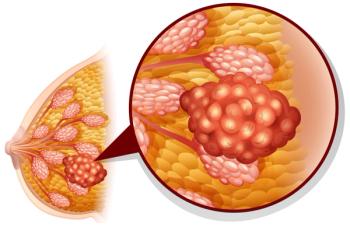
Selecting Patients Best Suited for AI Prostate Cancer Detection

An artificial intelligence algorithm appears to create accurate focal treatment margins in patients with prostate cancer, according to Wayne G. Brisbane, MD.
During
Brisbane, assistant professor of urology at the University of California, Los Angeles (UCLA) Health, suggested that MRI, though accurate, can sometimes underestimate the volume of a patient’s tumor. AI algorithms such as Unfold AI may help to further determine whether a patient is suitable to undergo focal therapy, Brisbane said. The technology uses data from tract biopsy cores, prostate-specific antigen (PSA) levels, and Gleason scores to estimate treatment margin definitions.
According to findings from a study published in European Association of Urology, the mean sensitivity for cancer-bearing voxels was 97% with AI margins, which was higher than those with conventional regions of interest (ROI) at 37% (P <.001), 10-mm ROI margins at 93% (P = .24), and hemigland margins at 94% (P <.001).
Transcript:
For Unfold AI, we took men who went and got their prostate removed—they elected to have a radical prostatectomy. [However], some of the tumors are only encapsulating a small portion of the prostate. Those men’s prostate tumors looked small and [they] were candidates for focal therapy. It’s hard to select those patients because MRI is great, but it’s not perfect. It tends to underestimate tumor volume, and we’re not exactly sure whether it underestimates higher or lower. If we’re only going to treat the tumor, we need to know that for sure.
We took the pathology, and we trained an algorithm on that using MRI and the tract biopsy location. [When] we look at these biopsy cores, often sometimes it feels like you’re playing “Battleship;” you’re going through and dropping these cores at certain locations. We track through the three-dimensional location of all those cores, and that fed that into the algorithm, as well as men’s PSA demographic features and their Gleason score. We used [those factors] to create these models. It’s really accurate. We trained it using thousands of biopsy cores, which we validated against patients here at UCLA and then again at Stanford.
Reference
Priester A, Fan RE, Shubert J, et al. Prediction and mapping of intraprostatic tumor extent with artificial intelligence. Eur Uro Op Sci. 2023;54:20-27. doi:10.1016/j.euros.2023.05.018
Newsletter
Stay up to date on recent advances in the multidisciplinary approach to cancer.





















































































